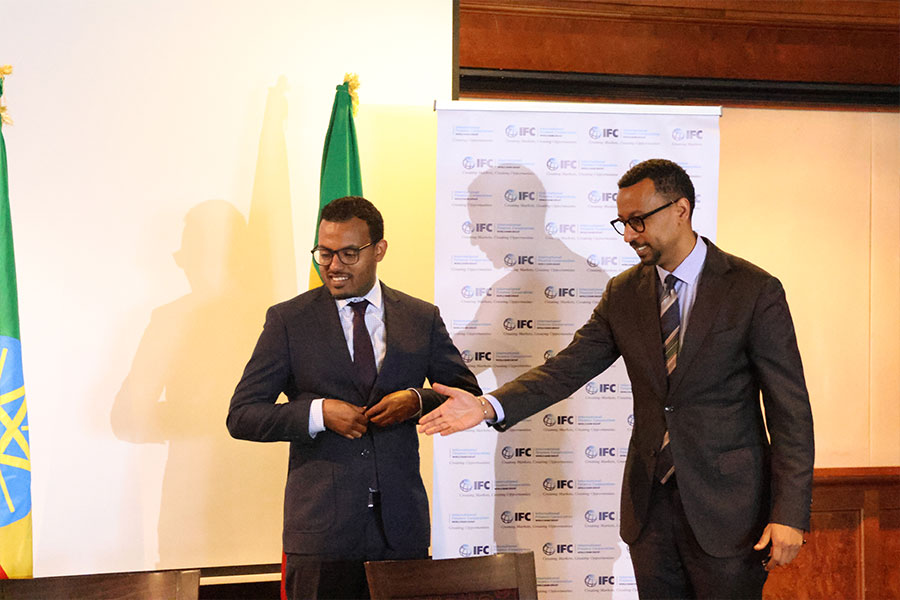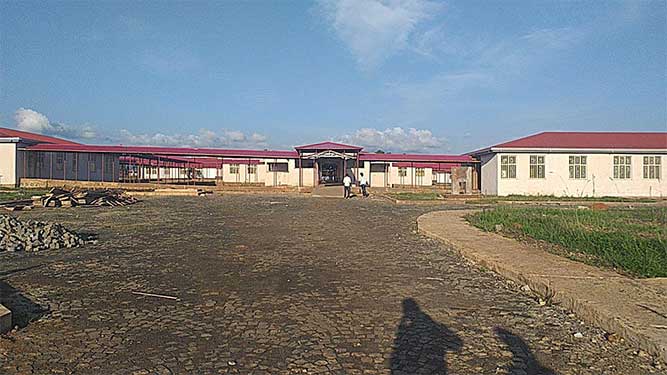
Fortune News | Sep 09,2023
Sep 14 , 2019
By TEMESGEN MULUGETA ( FORTUNE STAFF WRITER )
 Woliso General Hospital, built for 120 million Br, is expected to become operational in two months.
Woliso General Hospital, built for 120 million Br, is expected to become operational in two months. Woliso, a town located 110Km from the capital, has received its first government-owned hospital. Woliso General hospital, built for 120 million Br, is expected to be fully operational in two months.
Built by the regional government, the hospital rests on nine hectares of land and has about 31 blocks. It is built to give emergency, inpatient, outpatient, diagnostic, x-ray and other general services. Yot Construction, which was involved in the construction of Asela Kersa, Jimma Dado and Sendafa hospitals, as well as the renovation and expansion of the Addis Zoo Park Center, undertook the construction of the hospital.
The project was initially awarded to Merid Tadesse General Contractor in 2015, but because of under-performance, the project was terminated three years later, and the regional health bureau awarded the contract to YOT Construction. When the project was terminated under Merid Tadesse, it reached 28pc completion.
Yot Construction built the hospital with the supervision of Oromia Regional Health Bureau Project Construction and Maintenance Directorate of the Oromia Construction Authority.
The hospital is expected to serve more than 1.5 million people in a year with more than 250 beds.
"Residents of the area will be the main beneficiaries from the hospital, according to Mosissa Assefa, Oromia Regional Health Bureau’s project construction and maintenance director.
During the construction period, a continuous increase of the price of construction materials was the major challenge, according to Yonas Mulugeta, manager and owner of YOT Construction.
The construction of the project created job opportunities for 300 people, according to Yonas.
The hospital will be an addition to the existing hospital, Catholic Church-owned Saint Lukas Hospital, which has been serving the community for almost two decades. In service since 2001, the hospital operates with 200 employees. The hospital began its services with 80 beds, but now has 200 beds and provides 24-hour emergency, ophthalmology, dental and surgical services.
Erssido Lendebo (MD), an expert in the medical industry, appreciates the construction of the hospital, but he says there are more things to do.
"The physical structure is not enough, but the hospital should also be equipped with the necessary and modern equipment and able manpower," Erssido said.
The hospital also should partner with private institutions to develop its capacity and become a medical research centre over time, he recommended.
Currently, there are 66 operational hospitals, 1,363 health centres, 6,559 health posts, two regional laboratories and seven blood banks in Oromia Regional State.
At a national level, 400 hospitals are in operation with 9,182 doctors, 16,765 nurses and 1,379 midwives.
There are nine doctors for every 100,000 people in Ethiopia, according to the World Health Organisation, which is 60pc of the global standard. In low-income countries, there is an average of 30 doctors for every 100,000 people.
The number of functional health posts, health centres and hospitals in the country have sharply increased by 16pc, 33pc and 108pc, respectively, in the first half of this decade, according to a report by the United Nations Children's Fund (UNICEF).
PUBLISHED ON
Sep 14,2019 [ VOL
20 , NO
1011]

Fortune News | Sep 09,2023

Editorial | Nov 30,2024

Fortune News | Nov 27,2018

Radar | Oct 12,2019

Fortune News | Dec 04,2022

Fortune News | Oct 21,2024

Radar | Oct 10,2020

Fortune News | Oct 30,2021

Fortune News | Oct 03,2020

Radar | Jun 01,2019

Dec 22 , 2024 . By TIZITA SHEWAFERAW
Charged with transforming colossal state-owned enterprises into modern and competitiv...

Aug 18 , 2024 . By AKSAH ITALO
Although predictable Yonas Zerihun's job in the ride-hailing service is not immune to...

Jul 28 , 2024 . By TIZITA SHEWAFERAW
Unhabitual, perhaps too many, Samuel Gebreyohannes, 38, used to occasionally enjoy a couple of beers at breakfast. However, he recently swit...

Jul 13 , 2024 . By AKSAH ITALO
Investors who rely on tractors, trucks, and field vehicles for commuting, transporting commodities, and f...

Oct 25 , 2025
The regulatory machinery is on overdrive. In only two years, no fewer than 35 new pro...

Oct 18 , 2025
The political establishment, notably the ruling party and its top brass, has become p...

Oct 11 , 2025
Ladislas Farago, a roving Associated Press (AP) correspondent, arrived in Ethiopia in...

Oct 4 , 2025
Eyob Tekalegn (PhD) had been in the Governor's chair for only weeks when, on Septembe...